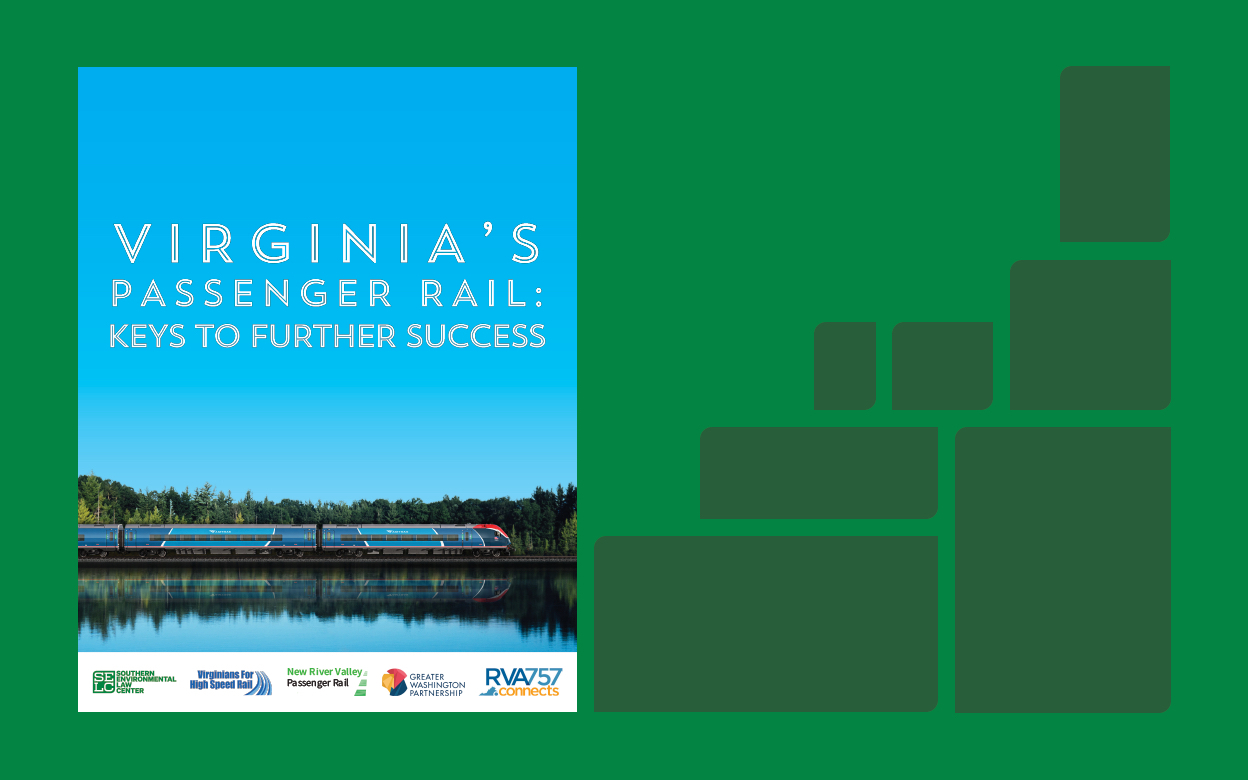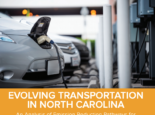Curbing transportation pollution
Transportation is the largest source of carbon pollution nationally, and in the South. It also is a leading source of other pollutants that harm our health—contributing to asthma, respiratory illness, cancer, and premature death, with communities of color and lower wealth communities unfairly bearing the brunt of this pollution. Transportation impacts everything from water and air quality to wildlife.
The enormous damage transportation pollution causes to our environment, health, communities, and economy is unacceptable and unnecessary. Better alternatives are available, and we’ve got to accelerate our efforts to provide cleaner, more equitable transportation.
Trip Pollard, leader of Southern Environmental Law Center’s Land and Community Program

Virginia’s Passenger Rail Works
After years of neglect, passenger rail in Virginia has been significantly expanded and the Commonwealth is currently served by eight round- trip, intercity regional trains. This report details the growth of passenger rail in the Commonwealth and future opportunities.
Transforming transportation
We are working to slash tailpipe pollution by pursuing fundamental changes to federal, state, and local laws, policies, and transportation investments.
There are abundant solutions available to overhaul the outdated, auto-centered transportation approach prevalent in much of the South. By reducing driving and cleaning up the vehicles we continue to use, we can lower transportation pollution—improving health, equity, our economy, and quality of life in addition to creating a better environmental future.
Our multi-faceted approach to curbing transportation pollution includes:
- Advancing cleaner, more equitable alternatives to driving, such as transit, passenger and freight rail, bicycling, and walking which all generate far less—or zero—pollution.
- Promoting electric vehicles, which have no tailpipe emissions and are far cleaner than gas-powered vehicles, even considering generation of the electricity they use.
- Halting destructive highway projects that can encourage and lock in decades of increased driving and tailpipe pollution—as well as spur sprawl, threaten vulnerable communities, and harm important natural and historic resources.
- Advocating for a “fix it first” approach that shifts funds from building new roads to maintaining and improving existing infrastructure.
- Promoting walkable, transit-oriented communities that allow people to live closer to work, school, shopping, and services. This can eliminate many vehicle trips and substantially cut pollution by making transit, rail, bicycling, and walking more viable.
- Making transportation funding decisions more transparent, using criteria that do not favor new highways, with pollution reduction central to transportation planning.


